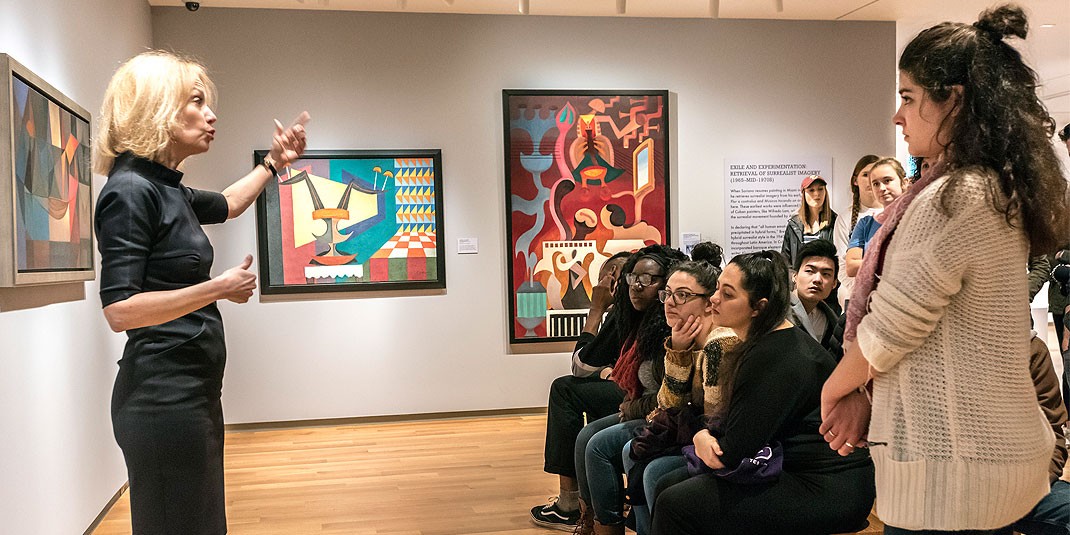Guided tours have long been a feature of the McMullen Museum of Art, but one recent visit led by Romance Languages and Literatures Lecturer Elizabeth Goizueta was special in a couple of ways.
More than 30 Boston College undergraduates in advanced Spanish language courses heard Goizueta give a presentation in Spanish on the museum’s current exhibition on Cuban-born painter Rafael Soriano – considered one of the major Latin American artists of his generation.
The tour was a perfect opportunity for the students, many of whom are “heritage speakers” – exposed to a language other than English at home – to put their conversational Spanish skills to use, explained Goizueta, who curated the exhibition and edited its English-Spanish catalogue. Yet there was another, more compelling dimension to the event, she added.

“Many of them had never been to a museum before, so this was a chance to show off the McMullen as well as to present living art and living Spanish, together.”
Goizueta’s 45-minute tour was an informal affair with plenty of room for question-and-answer exchanges.
“Instead of just hitting the students with facts, I wanted to focus on the narrative represented by the paintings and what it said about Soriano’s life. He had to leave his country, his family, even his profession, so it’s a narrative of transcendence and struggle. I think that’s what really impressed them.”
In fact, Goizueta said, the conversation even took a philosophical turn. “One student asked, ‘Did Soriano die happy or sad?’ I replied that I thought that, in the end, he died happy and sad, but peacefully – and you can have all those emotions at once as part of the human experience, which is what you look for in art.”
Rachel Chamberlain, the museum’s education outreach specialist, said Goizueta’s tour exemplifies the kind of connection the McMullen seeks to forge with faculty and students. She noted, for example, the “Art After Dark” program launched by the museum this academic year, a series of late-night social events aimed at students.
“We always want academic departments to know that this museum is here for them, as a resource they can use for engaging their students,” she said.
–Sean Smith / University Communications



